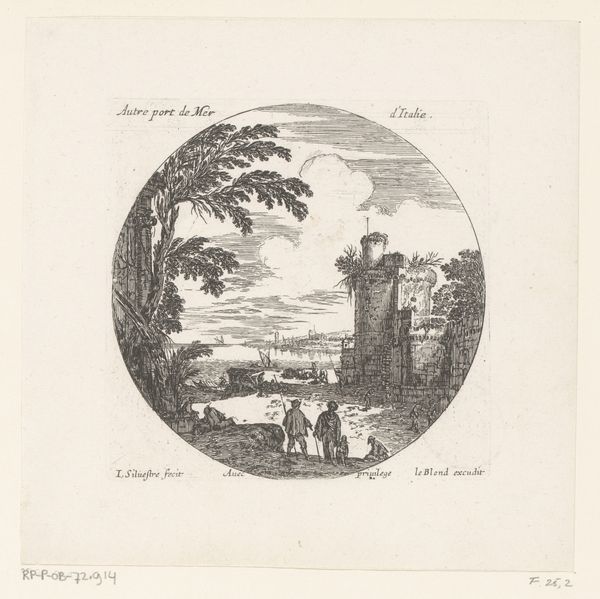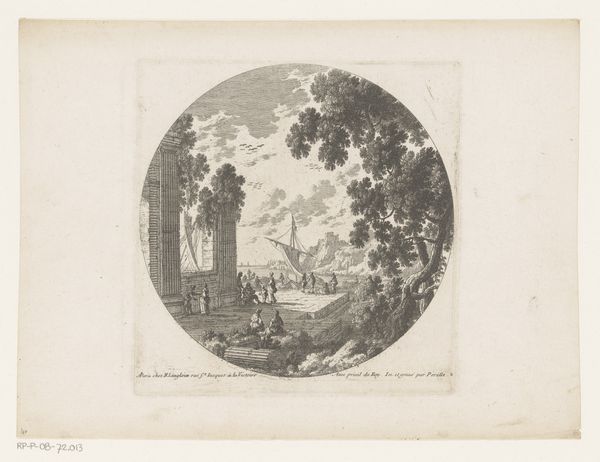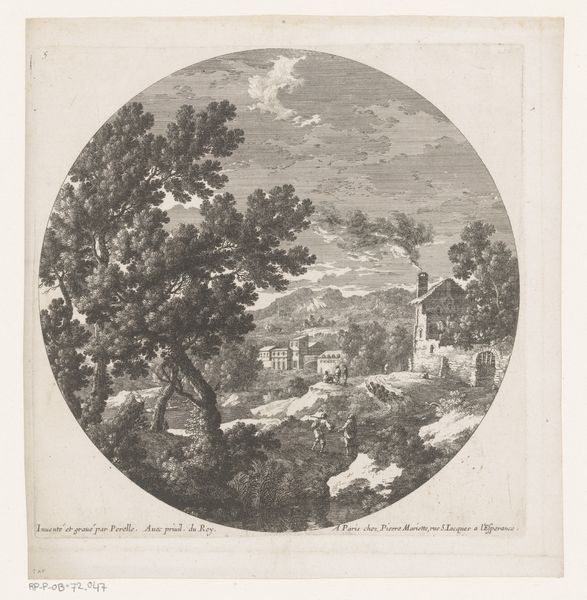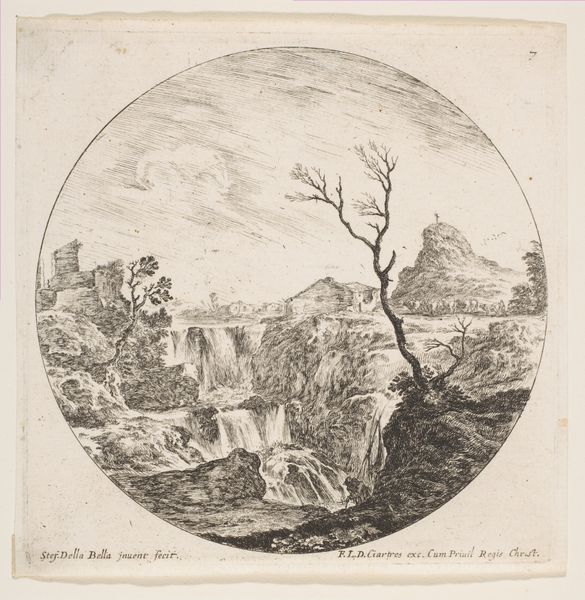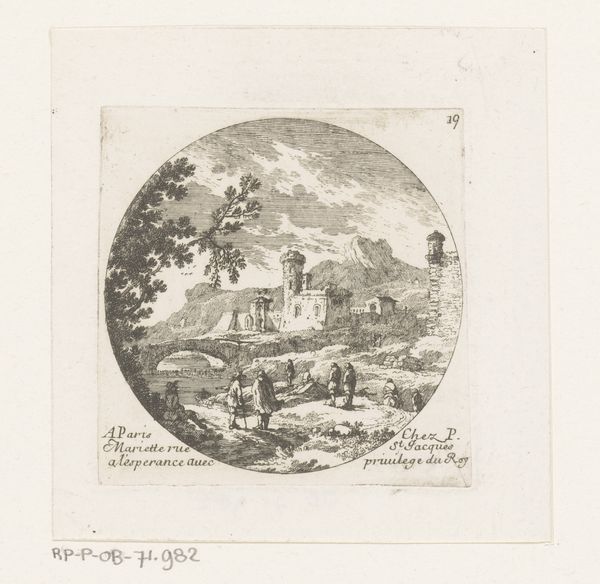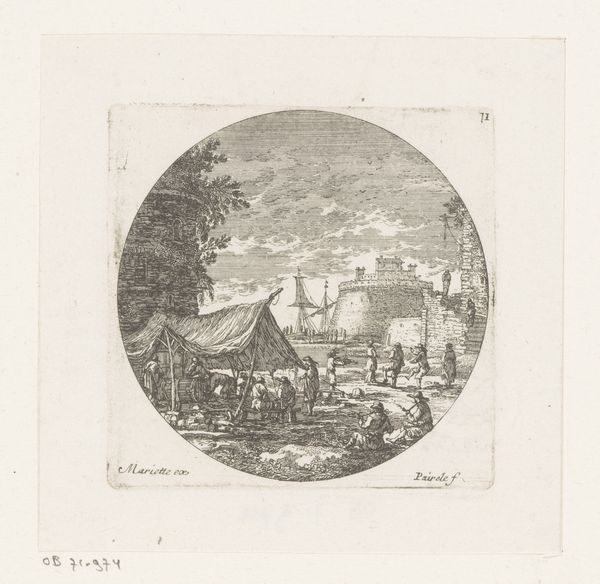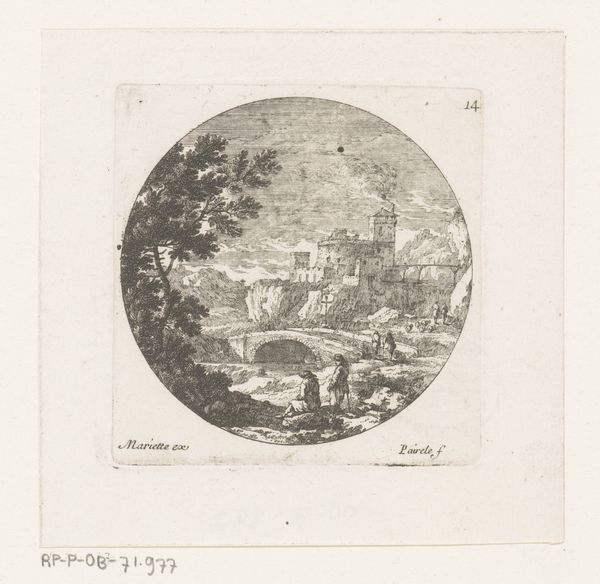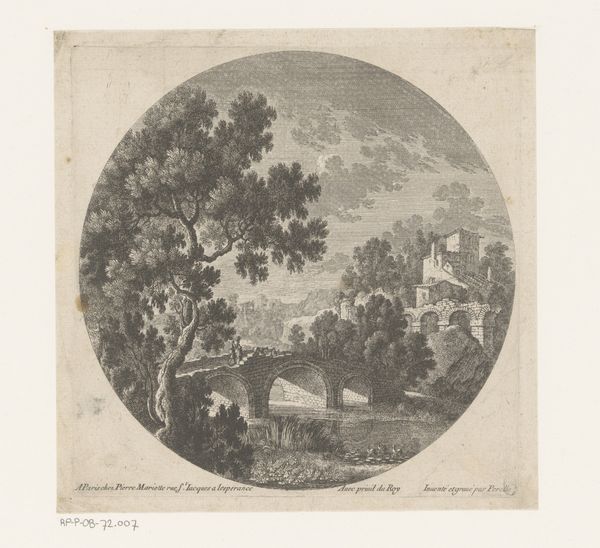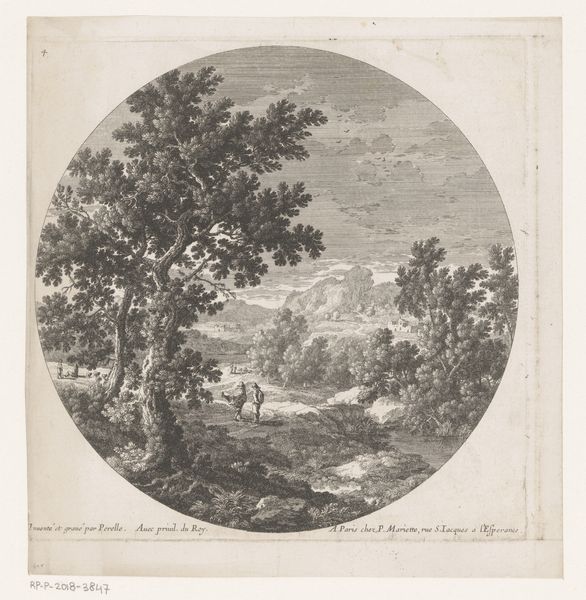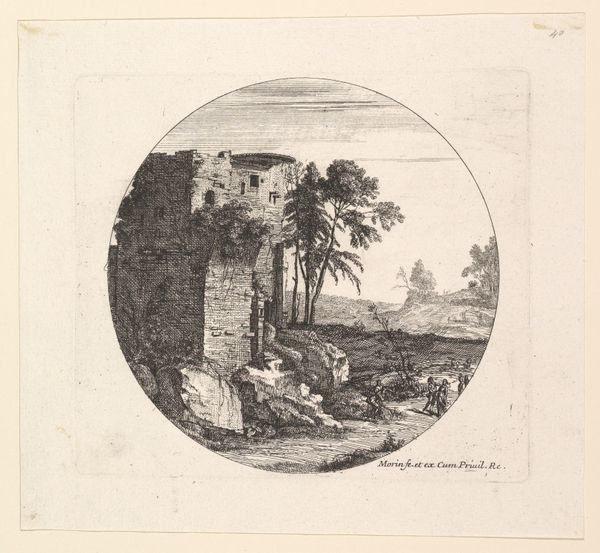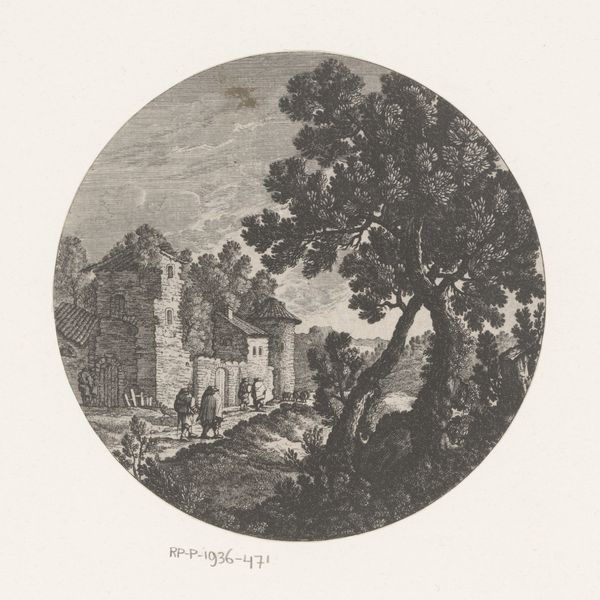
drawing, print, intaglio, engraving
#
drawing
#
baroque
# print
#
intaglio
#
old engraving style
#
landscape
#
romanesque
#
cityscape
#
history-painting
#
engraving
Dimensions: sheet: 7 13/16 x 7 3/16 in. (19.8 x 18.3 cm) image: 6 5/16 x 5 11/16 in. (16 x 14.5 cm)
Copyright: Public Domain
Editor: Jean Morin's "Les Ruines au Fond," dating from roughly 1605 to 1650, rendered in engraving. There's a definite feeling of melancholy, with this circular frame enclosing crumbling architecture and a lone figure. What strikes you most about this piece? Curator: What I see is a visual commentary on the passage of time and the instability of power. Ruins, particularly those of grand structures, were potent symbols in 17th-century Europe. They spoke to the transience of earthly empires, reminding viewers of the fate of even the most powerful civilizations. Consider Rome, for example; a constant reminder in plain sight, it could make people question absolutism or hereditary privilege. Editor: So, the setting isn’t just background; it's making a statement? Curator: Precisely! And think about the social context in which prints like these circulated. They were relatively accessible. They served as tools to disseminate ideas about history, memory, and political commentary to a wider audience. Do you notice how the single figure emphasizes the grandeur of what has been lost? Editor: I see what you mean! The figure almost becomes a stand-in for the viewer, contemplating the scene and, therefore, the implied political and social message. What would such pieces achieve? Curator: Perhaps inspire reflection, question the existing power structures or express nostalgia for a more glorious past, especially if those former societies had less absolute forms of control than the commissioner. It highlights how art could be both aesthetically pleasing and subtly subversive. Editor: I hadn't considered how engravings played such a vital role in circulating political ideas, and using something as common as ruins makes such an interesting case for it! Curator: Exactly, and this kind of perspective helps us consider what role the museum should play today.
Comments
No comments
Be the first to comment and join the conversation on the ultimate creative platform.
